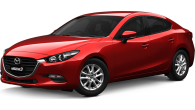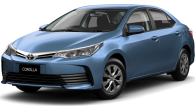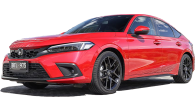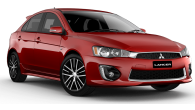The Fairlane no longer holds the place it once did atop the luxury-car pile, but many buyers still revere the nameplate that once defined local prestige motoring.
MODEL WATCH
The Fairlane concept as we know it today was introduced in 1967 with the launch of the first locally-designed model. It spun off the Falcon, making use of the same mechanical package and much of the front-end sheet metal, but with the wheelbase and boot lengthened to create a larger sedan with heaps of rear legroom and a cavernous boot.
Ford followed the same simple concept when it launched the AU in 1999. But while the AU was canned for its perceived ugliness, the Fairlane was a better-looking car. The down-in-the-mouth front of the Falcon was much the same in the Fairlane, but, with a neat styling makeover, took on a classier look.
If the front was little changed, the rear of the Fairlane was completely changed from its smaller sibling and much the better for it. Where the Falcon sagged at the extremities, the Fairlane sat high and handsome.
The Fairlane Ghia, as it was badged, could be ordered with the 4.0-litre single overhead camshaft six-cylinder VCT variable-cam timing engine, which boasted 168kW and 370Nm, or the smooth 5.0-litre overhead-valve V8 with 175kW and 395Nm. Both came with an electronic four-speed automatic transmission with a floor shift.
Underneath the extended skin, the Fairlane had independent suspension front and rear, the double wishbone rear set-up a marked improvement over the compromise set-up under Holden's Statesman.
Brakes were disc front and rear, with ABS and traction control standard fitment. Inside, the Ghia has leather trim, six-way power driver's seat, airconditioning, dual airbags and a sound system with CD player.
OWNER'S VIEW
Paul Karwacki owns a 2001 AUIII Fairlane sportsman that's clicked over 80,000km. Apart from a leaking power-steering high-pressure line and pump, he says it's been reliable.
IN THE SHOP
Mechanics report few problems with the AU -- there doesn't appear to be the issue with cylinder-head-gasket failure as in earlier models. A design revision has cleaned up the problem, although further improvements to the head gasket in the BA tend to suggest Ford didn't think the problems were completely solved in the AU.
Brake wear is a problem with the Falcon and Fairlane, so look for regular pad changes and disc machining. The problems were reduced with the AUII upgraded brakes.
Build quality has been a problem with the Falcon and Fairlane, and Ford made a serious attempt to solve it with the BA. That doesn't matter to anyone with an earlier AU, and the problems with the AU are more likely due to production issues than design flaws.
The Fairlane weighs almost 1700kg, so will consume lots of fuel. Ford's fuel consumption was as high as 14 litres/100km around town for the V8, so it would be worth considering LPG.
CRUNCH TIME
Competent suspension design, along with four-wheel discs, standard ABS and traction control, give the AU Fairlane the dynamics to avoid a collision, but should a crash be unavoidable, its strong body and dual front airbags come into play.
RATING
12/20 There's a lot of value in the Fairlane, but expect to pay for it at the pump.
Generally reliable engines and transmissions
Ability to tow
Heaps of rear leg room
High fuel consumption
Brake wear is a problem
High level of equipment
Enormous boot
Ford Fairlane 1999: Ghia
| Engine Type | V8, 4.9L |
|---|---|
| Fuel Type | Unleaded Petrol |
| Fuel Efficiency | 14.5L/100km (combined) |
| Seating | 5 |
| Price From | $4,840 - $7,150 |
Range and Specs
| Vehicle | Specs | Price* |
|---|---|---|
| G220 | 5.4L, Unleaded Petrol, 4 SPEED AUTOMATIC | $5,830 - $8,250 |
| Ghia | 4.0L, Unleaded Petrol, 4 SPEED AUTOMATIC | $4,510 - $6,710 |






.jpg)

.jpg)













.png)



